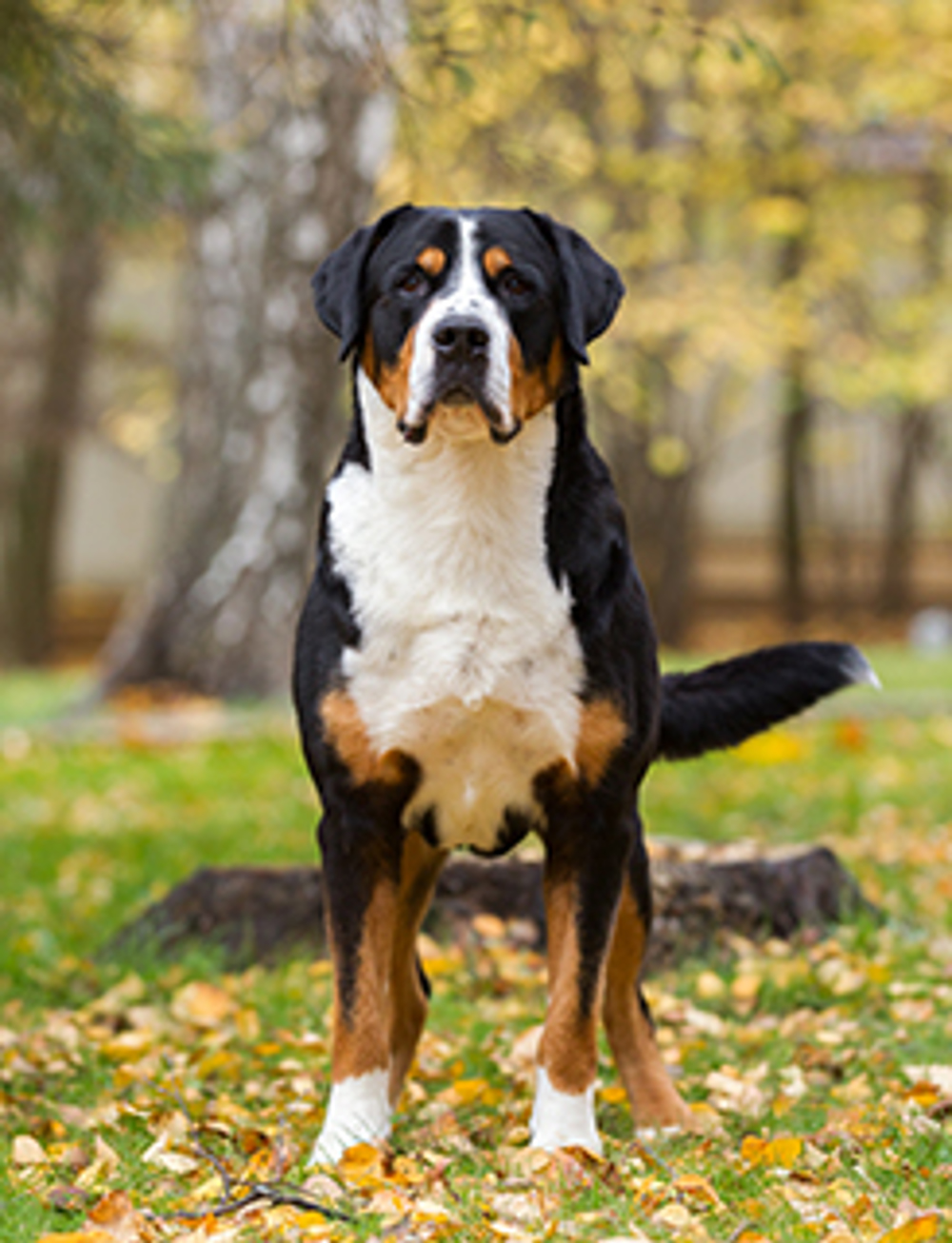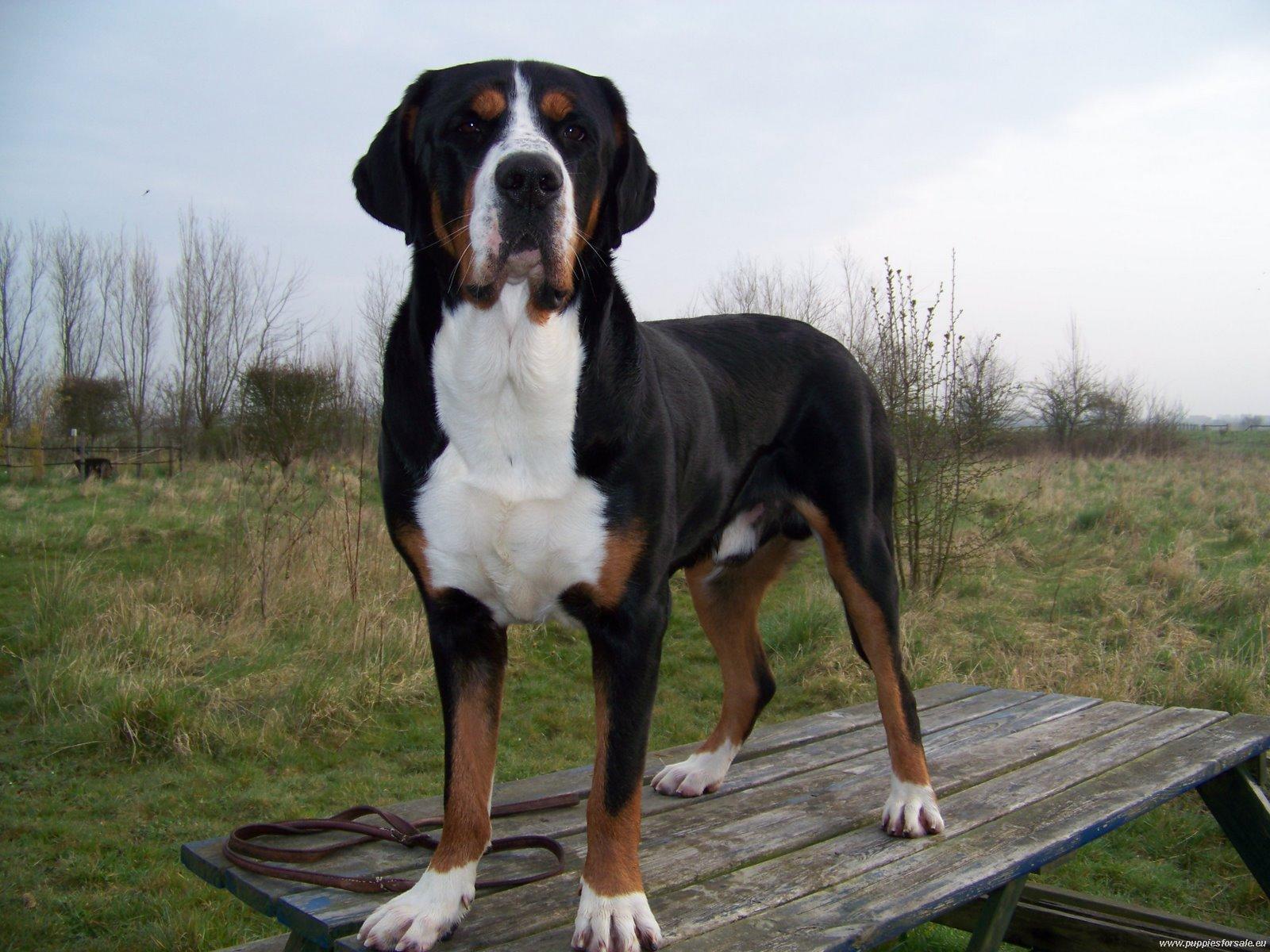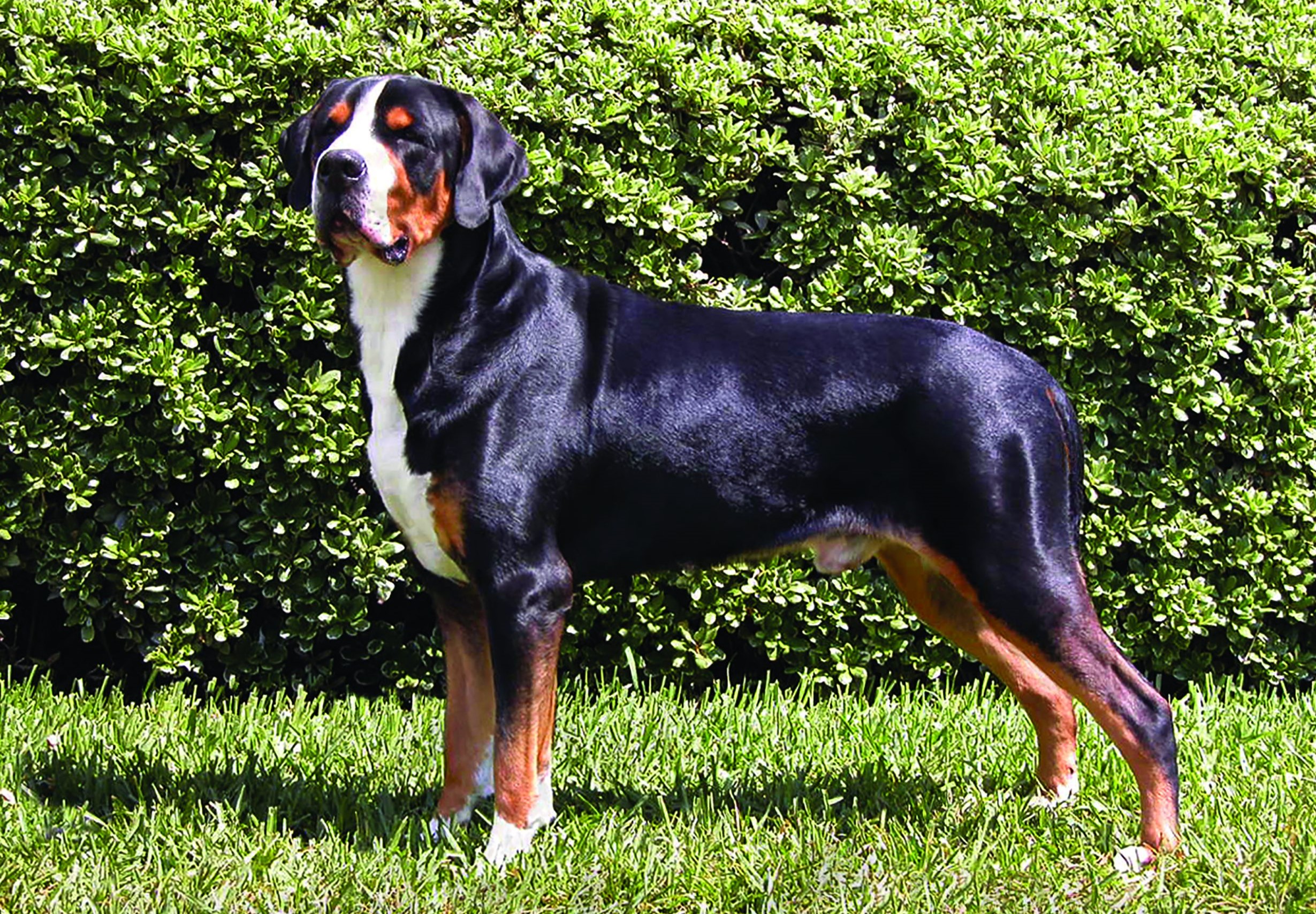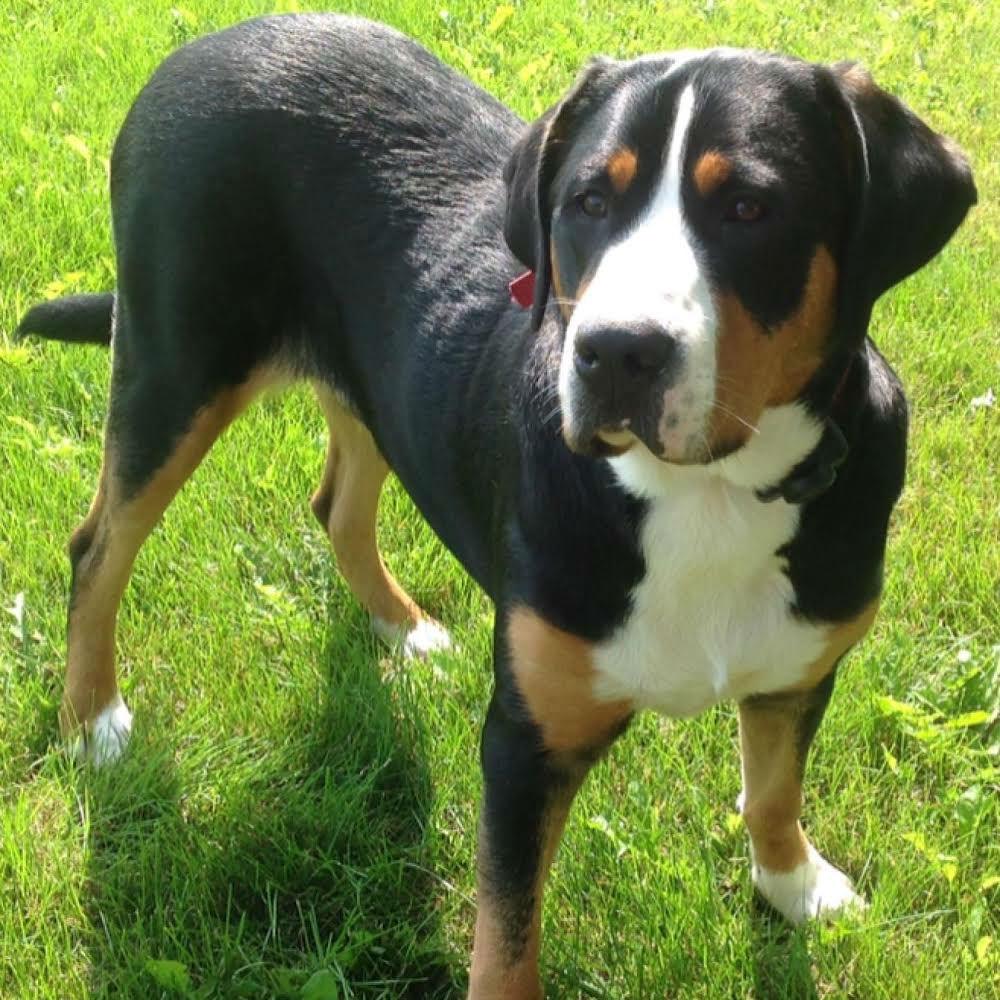Greater Swiss Mountain Dog: Is This Gentle Giant Right For You?
Is the Greater Swiss Mountain Dog (GSMD) the right canine companion for you? Considering their imposing size and impressive strength, these gentle giants from the Swiss Alps possess a unique blend of loyalty, affection, and work ethic that might just make them the perfect addition to your family.
The Greater Swiss Mountain Dog, often affectionately called a "Swissy," is a breed steeped in history, originating in the Swiss Alps. Developed to assist Swiss farmers, these dogs were bred for a variety of tasks, including pulling carts, herding livestock, and acting as watchdogs. The very name, "Sennenhund," hints at their heritage; it refers to the "Senn" or "Senner," the dairymen and herders who relied on these powerful dogs to help them manage their daily routines. The GSMD, sometimes referred to as Grosser Schweizer Sennenhund (German) or Grand Bouvier Suisse (French), is the largest and oldest of the four Swiss Mountain Dog breeds, a lineage that traces back to the mastiff or molossian dogs brought to the region by the Romans. This rich history has shaped the breed's character, resulting in a dog that is both a capable worker and a devoted family member.
| Breed Name | Greater Swiss Mountain Dog (Grosser Schweizer Sennenhund, Grand Bouvier Suisse) |
| Origin | Swiss Alps, Switzerland |
| Purpose (Historically) | Draft work (pulling carts), Herding livestock, Watchdog, Family companion |
| Size | Large to Giant. Males: 25.5 to 28.5 inches tall, 85 to 140 pounds. Females: 23.5 to 27 inches tall, 85 to 110 pounds. |
| Coat | Short, tricolor double coat (black, white, and rust) |
| Temperament | Loyal, loving, gentle, calm, alert, territorial (can be), good-natured, intelligent. |
| Training | Requires early socialization and consistent, positive reinforcement training due to their size and potential for territorial behavior. |
| Grooming | Moderate shedding, requiring regular brushing. |
| Health Considerations | Prone to bloat, hip and elbow dysplasia, and other breed-specific health issues. Health testing (hips, elbows, eyes, heart) recommended. |
| Lifespan | Typically 8-11 years. |
| AKC Breed Standard | American Kennel Club |
The GSMD's imposing size, stemming from its historical role as a draft dog, is immediately noticeable. They are heavy-boned, well-muscled, and built for power and endurance. Males can stand between 25.5 and 28.5 inches tall, weighing up to 140 pounds, while females typically range from 23.5 to 27 inches and can weigh up to 110 pounds. This substantial build underscores their inherent strength, a trait that made them invaluable to Swiss farmers. A GSMD can pull carts with loads up to an impressive 3,000 pounds, according to the Greater Swiss Mountain Dog Club of America (GSMDCA), a testament to their working abilities.
Beyond their physical prowess, the GSMD possesses a distinctive appearance. Their tricolor coat, a striking combination of black, white, and rust, is a defining characteristic. A white blaze typically runs down the center of their face, adding to their majestic presence. The short, double coat provides protection from the elements, a necessity for their work in the Swiss Alps. Regular grooming, including brushing, is necessary to keep their coat healthy and minimize shedding.
The GSMD's temperament is a key factor in determining its suitability as a companion. Despite their size, they are known for being gentle giants, devoted family companions, loyal, and loving. They thrive on human interaction and bond closely with their families. Proper training and socialization are crucial from an early age. While generally calm and easygoing, GSMDs can be territorial and alert, traits inherited from their watchdog heritage. Early socialization helps them to differentiate between acceptable and unacceptable situations, preventing excessive barking or protectiveness.
Caring for a GSMD requires a commitment to their physical and mental well-being. Their large size necessitates a spacious living environment and ample exercise. Daily walks, play sessions, and opportunities to explore are essential to keep them healthy and happy. They benefit from activities that utilize their natural abilities, such as carting, weight pulling, or even herding. Mental stimulation is equally important; puzzle toys, obedience training, and interactive games help to keep them engaged and prevent boredom, which can lead to destructive behaviors.
| Physical Exercise Needs | High. Requires daily walks, play, and opportunities to explore. Consider activities like carting or weight pulling. |
| Mental Stimulation Needs | High. Benefits from training, puzzle toys, and interactive games. |
| Grooming Needs | Moderate. Regular brushing to manage shedding. |
| Dietary Needs | Requires a high-quality, breed-appropriate diet to support their large size and activity levels. Portion control is crucial to prevent weight gain. |
| Training Needs | Consistent and positive reinforcement training. Early socialization is crucial to prevent unwanted behaviors. |
| Living Environment Needs | A spacious living environment is recommended. They can adapt to different environments with proper care and exercise. |
| Health Considerations & Monitoring | Be vigilant about signs of bloat, hip and elbow dysplasia. Routine vet checkups and health testing are recommended. |
Given their potential for health issues, responsible ownership includes proactively addressing potential health concerns. Like all large breeds, GSMDs are at a higher risk for certain conditions. Bloat, a life-threatening condition where the stomach twists, is a serious concern, and owners should be educated on its symptoms and preventative measures. Hip and elbow dysplasia, conditions affecting the joints, are also common. Reputable breeders will conduct health screenings, such as hip and elbow evaluations by the Orthopedic Foundation for Animals (OFA), to minimize the risk of passing these conditions on to their puppies. Ophthalmologist evaluations are also recommended to screen for eye conditions. Purchasing a puppy from a breeder who prioritizes health testing is crucial. You can also ask about any health tests or clearances that have been done.
The GSMD Club of America (GSMDCA) strongly recommends these evaluations and other health screenings to help ensure the health and well-being of the breed. These steps are instrumental in promoting responsible breeding practices. Additionally, owners should be aware of potential cardiac issues and be prepared to discuss these and other health concerns with their veterinarian. Regular veterinary check-ups and a healthy diet are fundamental to maintaining a GSMDs health and longevity. The breed's lifespan is typically 8-11 years, and proactive health management can help ensure they enjoy a long and fulfilling life.
The breed's history reflects a period where working dogs were integral to daily life. The breed almost became extinct in the late 19th century as machines and other breeds replaced the dogs in their work. Fortunately, Albert Heim, a Swiss expert on the Sennenhund breeds, rediscovered the GSMD in 1908 while judging a dog show, and he began to encourage breeders to take an interest in them. His efforts, and the dedication of early breed enthusiasts, led to the breeds resurgence. In 1990, the GSMD was officially listed in the Swiss Stud Book of the Swiss Kennel Club, a pivotal moment in the breed's modern history.
The GSMD was first introduced to the United States in 1968, which subsequently led to the formation of the GSMD Club of America. The club promotes responsible breeding practices, provides resources for owners, and organizes events that celebrate the breeds abilities. Breeders like "Painted Mountain Greater Swiss Mountain Dogs" have been producing champion Swissys since 1996, striving to breed dogs with excellent temperament and sound structure that adhere to the AKC breed standard. Many GSMDs excel in conformation, obedience, and other performance venues, showcasing their intelligence and versatility. Their ability to win in the show ring or excel in performance events underscores their trainability and inherent desire to please.
Today, GSMDs continue to thrive. They have steadily increased in both numbers and popularity. They are often described as uniquely combining affection and performance. They blend into family life, harmonizing with children and other family members. Dedicated breeders strive to produce quality GSMDs that excel as working dogs, show dogs, and wonderful family companions. Selective breeding practices, alongside educating new puppy owners, are essential in the continuous improvement and preservation of the breed. The "Swissy" is not only a working dog; it is a cherished companion.



